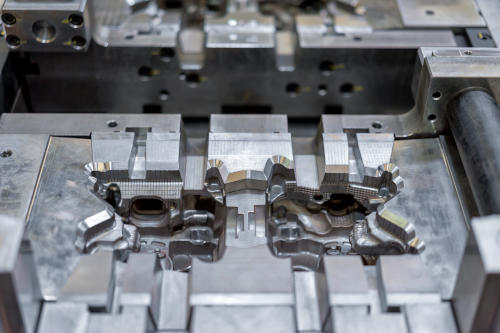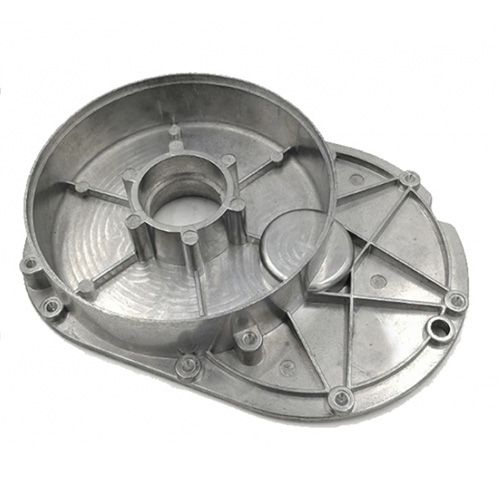How Aluminum Casting compares with alternatives in strength
Wiki Article
Everything You Required to Know Regarding the Uses and Perks of Aluminum Castings
Aluminum castings play an important duty throughout various markets, providing one-of-a-kind properties that improve item performance. Their lightweight nature and toughness make them optimal for applications in vehicle and aerospace markets. In addition, the adaptability of casting approaches enables complex layouts and limited tolerances. As the need for lasting remedies rises, recognizing the benefits and applications of aluminum castings comes to be significantly essential. What details benefits do they offer over other products?Summary of Aluminum Casting Processes
Aluminum casting processes include a selection of methods made use of to form liquified aluminum into desired kinds. These methods consist of sand spreading, die spreading, and financial investment spreading, each offering unique advantages depending upon the application (Aluminum Casting). Sand casting involves producing a mold and mildew from sand, allowing for elaborate styles and big components, while die casting uses high pressure to inject liquified aluminum right into steel molds, making certain accuracy and smooth finishes. Financial investment casting, likewise understood as lost-wax casting, generates intricate forms with exceptional dimensional precision, making it ideal for comprehensive partsThese processes are defined by their capacity to create lightweight, durable components that exhibit exceptional rust resistance. The versatility of aluminum permits modification in various markets, from automotive to aerospace. In addition, the capacity to reuse aluminum boosts the sustainability of these casting processes, minimizing ecological impact while preserving product honesty. Understanding these techniques is essential for optimizing production efficiency and accomplishing high-quality aluminum castings.
Trick Applications of Aluminum Castings
Aluminum castings play a necessary function throughout different markets, especially in automotive, aerospace, and consumer electronic devices. In the auto industry, they contribute to light-weight frameworks that enhance fuel performance. Aerospace parts profit from aluminum's strength-to-weight ratio, while customer electronics utilize its adaptability for reliable manufacturing.Automotive Industry Applications
As the automotive industry proceeds to evolve, makers significantly rely upon aluminum castings for their light-weight yet long lasting residential properties. These castings play an important function in improving vehicle efficiency, fuel efficiency, and overall safety and security. Key applications consist of engine blocks, transmission housings, and structural parts, which gain from aluminum's excellent strength-to-weight proportion. In addition, aluminum castings help with intricate geometries, allowing for ingenious styles that enhance aerodynamics and reduce drag. The corrosion resistance of aluminum also adds to durability, minimizing upkeep expenses for both suppliers and consumers. As electric cars gain appeal, aluminum castings are crucial for battery enclosures and various other parts, further solidifying their significance in the future of auto manufacturing.Aerospace Part Manufacturing
In the aerospace sector, aluminum castings are important to the production of light-weight, high-performance components. These castings are important for manufacturing parts such as engine housings, architectural structures, and landing gear components, where weight decrease is crucial for gas effectiveness and overall performance. The excellent strength-to-weight proportion of aluminum enables the development of intricate geometries that enhance the rules of aerodynamics. Additionally, aluminum's resistance to deterioration adds to the long life and reliability of aerospace components, guaranteeing safety and security in trip operations. The casting process additionally enables precise tolerances, which is very important in conference rigid aerospace industry criteria. In general, aluminum castings play a pivotal role in advancing aerospace technology while sustaining the industry's press for sustainable methods.Consumer Electronic Devices Manufacturing
Using aluminum castings in customer electronic devices manufacturing has actually ended up being increasingly significant because of their lightweight and sturdy properties. Manufacturers utilize these castings to produce parts for various devices, including smartphones, laptop computers, and video gaming consoles. Aluminum's excellent thermal conductivity likewise helps in heat dissipation, enhancing tool efficiency and long life. The versatility of aluminum allows for intricate styles and complicated geometries, making it possible for sleek and contemporary aesthetics that appeal to consumers. Additionally, aluminum castings can be easily reused, straightening with the expanding demand for lasting production methods. As modern technology advancements, the function of aluminum castings in establishing cutting-edge and effective consumer electronic devices is anticipated to broaden, making them a staple in the market.
Benefits of Using Aluminum Castings
While numerous materials are readily available for spreading, aluminum stands out due to its distinct mix of light-weight homes, stamina, and corrosion resistance. The low thickness of aluminum makes it an excellent selection for applications where weight reduction is important, such as in the automotive and aerospace sectors. Its outstanding strength-to-weight proportion enables makers to create resilient components without adding excessive weight.In addition, aluminum castings can be created with complex styles and tight resistances, making it possible for intricate geometries that are tough to accomplish with various other materials. The versatility of aluminum permits for various casting methods, consisting of sand, die, and financial investment spreading, dealing with diverse production needs. Aluminum's simplicity of machining and completing improves its charm, helping with the creation of high-grade surface finishes. In general, the benefits of using aluminum castings add to improved performance and effectiveness in numerous applications across different industries.
Deterioration Resistance in Aluminum Castings

Natural Oxide Layer
A natural oxide layer forms on the surface area of aluminum castings, providing an important barrier against ecological elements that can cause damage. This thin, safety film is a result of the aluminum's reaction with oxygen in the air, efficiently securing the underlying steel from Aluminum Casting wetness, chemicals, and toxins. As a result, aluminum castings display impressive rust resistance, which boosts their long life and sturdiness in various applications. The oxide layer is not just beneficial for protection however likewise adds to aesthetic top qualities, as it can establish a matte coating that lots of industries like. Furthermore, this natural process lessens the need for additional finishings, making aluminum castings an affordable selection for makers seeking trustworthy, long-lasting materials.Alloy Variations Influence
The composition of aluminum alloys greatly influences their deterioration resistance residential or commercial properties in castings. Different alloy variants, such as 1xxx, 2xxx, and 6xxx collection, exhibit distinct levels of susceptibility to rust. For instance, 1xxx alloys, largely made up of pure aluminum, offer outstanding corrosion resistance due to their high pureness. On the other hand, 2xxx alloys, which consist of copper, may experience significant corrosion when revealed to harsh environments. 6xxx alloys, integrating magnesium and silicon, strike a balance between stamina and resistance. The existence of alloying aspects can enhance or decrease safety oxide layers, eventually influencing durability and performance. Comprehending these variants is vital for picking the ideal alloy for specific applications where deterioration resistance is vital.Design Flexibility and Personalization
Although numerous materials exist for casting applications, aluminum stands out because of its impressive style adaptability and possibility for personalization. This versatility permits designers and engineers to create elaborate forms and kinds that satisfy particular functional needs. Aluminum Casting. The low density of aluminum makes it possible for lightweight designs, which is especially helpful in markets such as automobile and aerospace, where weight decrease is essentialAluminum castings can be tailored to numerous specifications, consisting of wall density, surface coating, and dimensional resistances. This adaptability not only improves the aesthetic appeal but additionally enhances the performance of the final item. In addition, advanced techniques such as 3D printing and computer-aided style (CAD) more promote the modification process, enabling fast prototyping and reducing lead times. As a result, aluminum castings can properly satisfy the varied needs of different markets while providing manufacturers the capability to introduce and respond swiftly to market demands.
Comparison With Other Casting Products
While numerous casting materials each have their one-of-a-kind benefits, aluminum consistently shows exceptional residential or commercial properties that make it a recommended choice in many applications. Contrasted to iron and steel, aluminum is considerably lighter, which decreases the total weight of ended up products, improving fuel performance in auto and aerospace industries. Additionally, aluminum provides excellent corrosion resistance, needing much less upkeep in time contrasted to products like iron, which can corrosion.When compared with plastics, aluminum's stamina and durability go beyond many synthetic alternatives, making it appropriate for demanding settings. Additionally, aluminum's thermal and electric conductivity is extremely greater than a lot of various other steels, making it excellent for applications needing effective warmth dissipation or electric components.

Future Patterns in Aluminum Casting Modern Technology
Advancements in aluminum spreading innovation are readied to redefine its applications across numerous markets. Technologies in automation and robotics are streamlining production procedures, boosting performance and accuracy. The integration of expert system and artificial intelligence makes it possible for real-time tracking and anticipating upkeep, minimizing downtime and improving quality control.The development of sophisticated alloys is increasing the efficiency capacities of aluminum castings, making them ideal for more requiring applications, specifically in automotive and aerospace industries. Sustainable techniques are likewise getting grip, with enhanced focus on recycling aluminum and decreasing carbon footprints throughout manufacturing.
Additive manufacturing strategies, such as 3D printing, are being discovered to develop complex geometries that typical approaches can not accomplish, enabling for higher design versatility. These trends suggest a future where aluminum spreading will certainly not just meet however surpass industry expectations, driving advancement and sustainability in production.
Often Asked Concerns
Just How Are Aluminum Castings Recycled After Use?
Aluminum castings are typically gathered, cleansed, and refined in reusing centers. The material is melted down, refined, and after that reformed into new products, thus saving resources and lowering environmental impact while keeping aluminum's desirable properties.What Are the Normal Prices Related To Aluminum Castings?
The typical expenses related to aluminum castings differ based upon aspects such as intricacy, quantity, and product requirements. Usually, prices vary from a couple of dollars per extra pound to substantially greater amounts for intricate designs and large amounts.Exactly How Do Aluminum Castings Contrast in Weight to Steel Castings?
Aluminum castings weigh considerably less than steel castings, generally around one-third the weight (Aluminum Casting). This minimized mass permits less complicated handling, transportation, and application in different industries, adding to improved performance in style and production processesWhat Industries Primarily Count On Aluminum Castings?
Numerous sectors significantly depend on aluminum castings, including auto, aerospace, electronic devices, and durable goods. Their light-weight nature, deterioration resistance, and versatility make them crucial for manufacturing elements in these industries, enhancing performance and effectiveness.Exist Any Wellness Risks Connected With Aluminum Casting Processes?
Health and wellness threats related to aluminum casting procedures consist of exposure to fumes, dirt, and chemicals, which can bring about breathing concerns and skin irritation. Appropriate precaution and equipment are important to mitigate these prospective hazards in the work environment.Report this wiki page